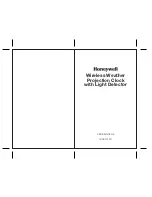
Figure 5: Winding Mechanism
Pyramid Cesium CSACGPSDO Prototype
The next generation of prototypes was built in a pyramidal shape with proportions from
the Great Pyramid of Giza. The bottom of the enclosure was black acrylic with a window
for the electronic displays, and the upper cover was clear acrylic to allow viewing of the
controls and chronometer. The thermal printer to record the natural rate of the
chronometer was added to the rear panel, and backup batteries (Saft thionyl-chloride D
cells) were fitted inside the base. The “tick” signal output from the mechanical
chronometer needed to operate the rating circuit and printer was changed to a simple
contact-closure mechanism which is available in a few of the Hamilton 21 chronometers
which were made in the last century. While only a few of these exist, the mechanical
contact closure is much superior to optical and audio sensors that were evaluated to
pick up the “ticks” of the chronometer.
In the Pyramid Clock, the atomic reference was a Jackson Labs cesium-CSAC GPS
Disciplined Oscillator module, which incorporated a cesium reference oscillator phase-
locked to the GPS chip. A separate display was run from this module to display the date,
time, latitude, longitude, and operational characteristics of its GPS and the CSAC. The
GPS clock was a ublox EVK-M8F module, which provided date, time, longitude, and
Содержание The Time Traveler's Clock
Страница 1: ...THE TIME TRAVELER S CLOCK The Project s History and User Manual Euclid Laboratories Inc Teaticket MA...
Страница 19: ...Figure 12 Cesium Chip Scale Atomic Clock Circuit Board...
Страница 23: ...Figure 16 Time Traveler s Clock System Schematic Diagram...
Страница 24: ...Figure 17 Hamilton 21 Chronometer Starting Instructions...
Страница 25: ...TTC Installation and Operation Manual...
Страница 34: ...Figure 21 Gimbal Locking...












































